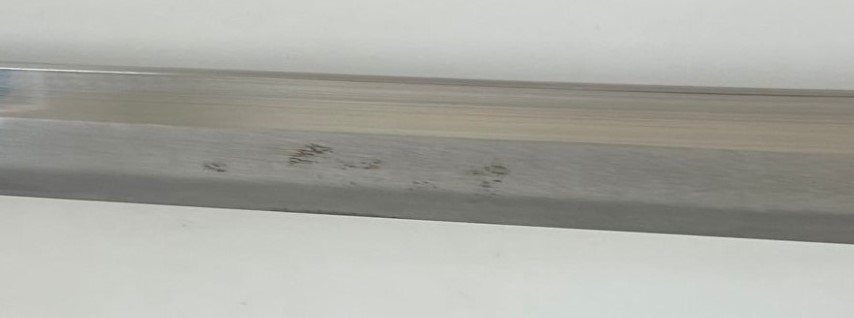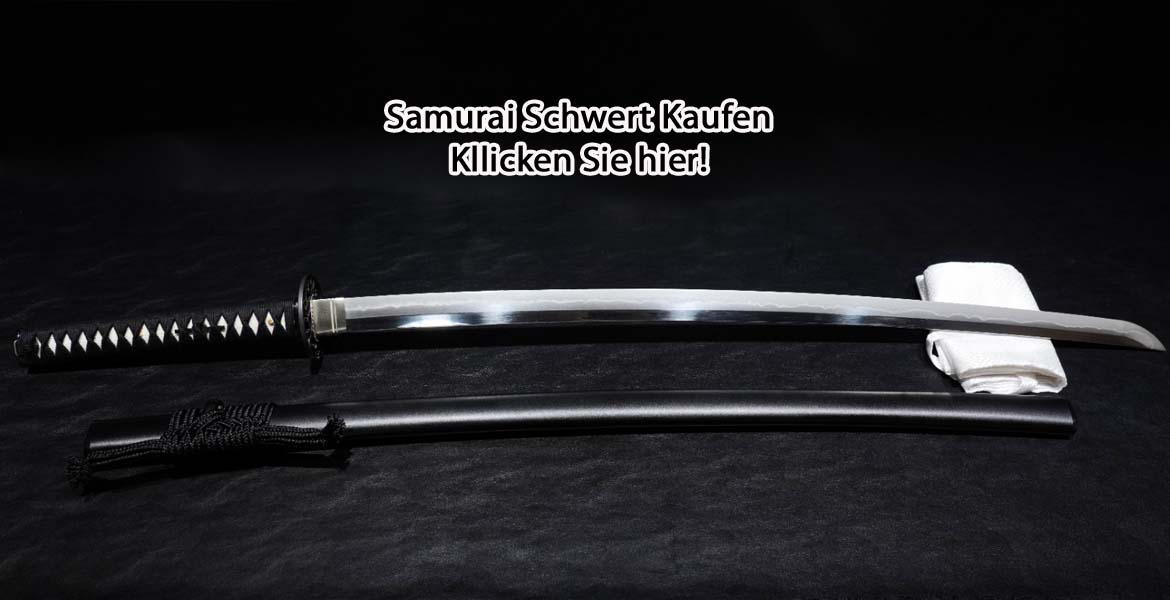I have rust on my Katana Blade - What can I do about it?
The most important thing, of course, is to ensure that rust cannot develop on your blade by properly maintaining it with oil. Anyway, unfortunately this was forgotten or done too long ago, and now you have some tarnish or flash rust on your sword blade.
You take your sword out of the sheath and to your dismay, light rust spots can be seen on your sword blade. Sometimes this looks like a light brown transparent stain or perhaps a dark to black spots. Fortunately, with some skill you can do something about this yourself, you don't have to worry too much. I make a clear distinction here between an authentic Japanese nihonto or a modern production sword. With an authentic Japanese sword I would first obtain information from a Japanese sword specialist, who can assess this better. He or she would probably like to see the magazine first before a plan of action can be made. It is important that a light layer of oil is quickly applied to stop the process of rust formation, this is included as standard in a maintenance kit.
So my recommendations here are about the less expensive modern Japanese swords that may have been produced at various forges. This includes Chinese, Cambodian, Thai or German sword manufacturers.
How exactly does flash rust arise?
Oxidizing or rusting is a natural and chemical process. When the iron in the steel comes into contact with oxygen and water, the process of rusting is initiated. How does moisture or water come into contact with the leaf, this can be for various reasons such as high ambient humidity, sweat from your hands or perhaps you have practiced tameshigiri and there was moisture in the materials.
It is important to remove the rust film from the blade.
Because we are talking about superficial rust, you may still be able to remove it with the normal maintenance procedure of your sword. For this you need the Uchiko ball, which contains a light polishing powder. And of course the oil that you normally use to keep your sword in good condition.
The first step is to apply the oil and see if it can remove the brown color formation. Perhaps the oil will penetrate into the rust and this will work. You have to be patient with this, try it a few times and let it take effect.
If this does not work, I would continue to the second step and use the Uchiko ball, you apply it in the normal way and try to remove the starting oxidation with the rice paper.
By treating with Uchiko, which provides a very light polish and absorbs moisture well, you have a good chance that the accumulated rust parts will disappear after you try to remove them with rice paper. It is important to work quietly, the uchiko powder can quickly damage the shine of the sword blade. So you should not apply too much pressure to avoid damaging the sword.
The third step is to be a bit more aggressive because the rust is probably less superficial. Please note that you will actually be tackling the surface of your Katana blade. I also make a distinction between the different surface areas of your blade. There are parts of you that are more complex in terms of polishing. Incipient rust on your ha or hamon or at the level of your kissaki on the yokote line is more difficult to remove without really ruining the polish. I would rather leave this to a professional. If you have a spot on the mune or back or in your bo-hi or near the shinogi ji, you can address it with a light polish. Again, you don't do this with an authentic Japanese Katana.
I use Commander 5 for this myself, this is a light scratch remover, and this comes from the automotive industry. It is best to use a microfiber polishing cloth.
.jpg)
The polish is medium and therefore removes deposits and possibly incipient rust. It is a water-based and low-solvent polishing agent that does not penetrate into the steel. You will need to remove it completely when you are done with this last resort. After this you have to polish away real steel or use wet sandpaper, this is not at all for the beginner.
I always use a microfiber cloth, these polishing cloths are strong, soft, washable and do not fluff easily. You first try without the polishing agent to see whether you can remove the stubborn deposits. If this still does not work, add a little polish to the cloth and gently rub the stain to see if it goes away. Depending on how hard you press, you should now be able to polish it away. If this still has no effect, you really need to go to a professional polisher for advice. As indicated, do not do this on the Hamon because you will certainly see a difference in the polishing here. This solution is only suitable for the mune or back and the shinogi-ji.
Restoration by an expert polisher is expensive and only proportionate if the sword itself has some value. Preventing rust is therefore very important.
What can I do so that my Katana does not rust?
To properly protect a Katana blade, regular oiling is the best protection. Store the swords in an environment with low humidity and ensure that the blade is properly re-oiled after touching it with your hands. It is in any case not advisable to touch the blade with your bare hands because your skin always releases moisture and a film of moisture and fat remains. This is the reason you can take fingerprints. Read more about the maintenance of your Samurai Sword here.



